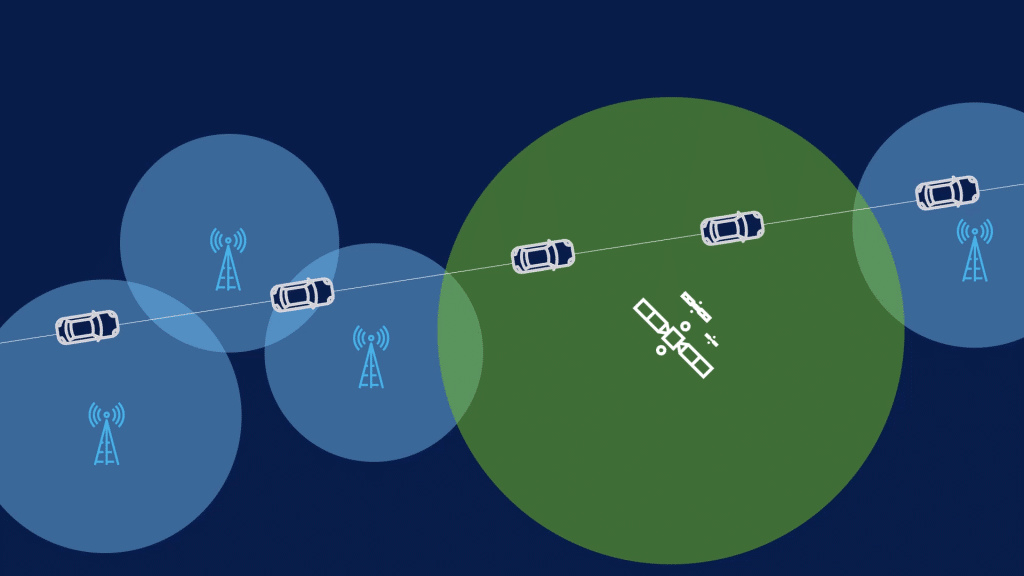Intelsat Satellite Connectivity is Making Smart Farming a No-Brainer
Joel Schroeder, Director, Land Mobile Products
(reading time: 10 minutes)
Agriculture 4.0 and the Rise of Smart Farming
Agricultural practices are largely the same today as they were in the 1970s at the end of the industrial agricultural revolution that brought high-yield crops, hybrid seed varieties, synthetic fertilizers, pesticides and other mechanical infrastructures. These technologies resulted in accelerated productivity, but farmers are now facing decreasing margins, increasingly complex regulatory requirements, greater scrutiny from consumers, growing complexity of machinery, and changing weather patterns that are increasing the incidence of droughts and extreme storms.
We are now in the midst of another agricultural revolution to utilize connected technologies to help farmers make more informed decisions and optimize their operations through the collection and analysis of a myriad of data points on crops, conditions and equipment. Perhaps the most game-changing of these digital innovations is connected heavy equipment, which allows farmers to control their large machinery, like tractors, remotely. This cuts down on the hours needed in the field, allowing the farmer to cut staff and focus on improving yields.
Connected smart farms or “precision farming” require robust connectivity solutions to stream data from equipment to the cloud. There over 570 million farms globally, many of which are located in rural locations with poor or spotty access to traditional connectivity solutions. Intelsat FlexMove satellite network is giving farms the reliable connectivity needed to adopt connected equipment and bring on the next great agricultural revolution.
The Rise of Heavy Equipment for Precision Agriculture
Farms rely on large equipment for most of their operations, including cultivation, irrigation and harvesting. This equipment includes tractors, harvesters, pumping units, sprinklers, plows, conveyors and more. Much of a farmer’s time is spent manning this equipment out in the field – often for over 12 hours a day, but new connected solutions are beginning to change that. Heavy equipment for agriculture is now being constructed with sensors built in and connectivity on board, allowing the farmer to optimize and troubleshoot machinery remotely while receiving real-time data inputs on the health of their equipment and crops. Autonomous equipment gives farmers even more freedom.
Harbor Research forecasts that the heavy equipment and machinery market for agriculture will reach nearly $10 billion this year, growing to more than $26 billion in 2030. Just over 37 percent of the farms in the U.S. had connected equipment last year and Harbor expects that to grow to more than 70 percent by 2030.
Companies like John Deere are leading the connected machinery market with products like their satellite gateway, which offers on-board telematics to monitor, control and repair machinery remotely. John Deere’s Precision Ag suite of tools includes data dashboards to monitor, analyze and share data from anywhere. At the Consumer Electronic Show (CES) in 2022, John Deere released the 8R, its first autonomous tractor.
Connected and autonomous agricultural equipment will lead to more precise operations, more effective irrigation and reduced labor costs as farmers spend less time in the field and require less labor. Farmers will have more time to focus on real-time data rather than operating machinery. Data insights will allow farmers to make informed decisions, understanding potential outcomes up front rather than waiting an entire harvest cycle to see how their decisions pan out. It all translates to greater operational efficiency and higher yields.
With heavy agricultural equipment operating in rural environments, cellular or Wi-Fi connectivity doesn’t cut it. A large tractor being operated remotely needs a reliable connection at all times to move past unexpected obstructions and keep work flowing smoothly. An interruption due to poor connectivity or bad weather can cause operations in a smart farm to shut down completely. Intelsat FlexMove satellite network gives equipment manufacturers the tools to build in reliable, redundant connectivity, while farmers can now retrofit existing equipment with compact satellite antennas.
Connected Farming for a Changing Climate
Smarter, more efficient farms are arriving at a critical time. Agriculture is extremely vulnerable to our increasingly erratic and changing climate. Warming temperatures, extreme weather, droughts, floods, invasive crops and pests are creating difficult and unpredictable conditions for farming. Paradoxically, agriculture is also contributing to the problem. Agriculture currently outputs 19 to 29 percent of total greenhouse gas emissions – a number that is likely to keep going up without intervention to more efficiently run operations.
The environment isn’t the only beneficiary of optimized farming. Today, about a third of the global food produced is lost or wasted despite nearly 9 percent of the global population, or 690 million people, lacking needed nourishment. Studies show that by 2050, climate change could result in a 13 percent decrease of developing countries’ wheat production and a 15 percent decrease in rice production. Connected equipment that allows farmers to more efficiently cultivate, irrigate and harvest crops will help feed the hungry and prevent waste.
Global population growth, food scarcity and economic insecurity will continue to put significant upward pressure on agriculture markets to produce sufficient levels of human food, stock feed and biofuel. This has led to a drive for Climate-Smart Agriculture (CSA), an approach to managing crops, livestock, forests and fisheries in a way that increases agriculture productivity and resilience, while reducing emissions. This is pointing to not only the consumer demand, but the global necessity for the integration of connected, intelligent technologies that lead to more sustainable, optimized farming.
The Autonomous Connected Farm and the Farmer of the Future
With connected farms sending over 10 terabytes per year in 2022, growing to 153 terabytes in 2032, the role of the farmer is beginning to evolve. Today’s farmers, and the farmers of the future, must understand data analysis in addition to horticulture. With connected equipment and a growing number of autonomous equipment, farmers will spend less time doing manual labor and more time in the critical role of utilizing data to optimize farms for a more sustainable future.
Fewer young people are entering agriculture than at any time in human history, but the evolving set of technology skills that smart farms require could very well change that. According to Harbor Research, the agriculture market is conventional in terms of technology adoption, but the combination of consumer demands, climate change and regulation is expected to drive greater adoption in the next two to three years. Connected and autonomous equipment will allow farms to operate with leaner staffs, while the evolving role of the data-savvy modern farmer will attract new talent. Given the average age of farmers in the U.S. is more than 57 years old, recruiting new talent and minimizing labor requirement is critical.
For both small and large-scale farms, connectivity challenges have continued to be persistent, leading many farmers to drag their feet on embracing digital solutions. Rural internet access leaves much to be desired. This is particularly true in developing economies. In Brazil, 85 percent of its nearly 5.2 million farms are small family establishments, often in rural locations. Yet they account for up to 70 percent of Brazil’s food production. The number is similar in developed regions like the U.S. where 90 percent of its more than three million farms are small family owned and operated farms that generate 21 percent of food production. Satellite connectivity gives all farms equal access to technology solutions that can help them weather environmental, economic and market instability. In the competitive landscape of agri-business, integrating connected equipment, automation and analytics ensures competitive equity and healthy growth across the market.
Intelsat FlexMove Provides Reliable Connectivity with Flexible Subscription Plans
Intelsat FlexMove network is the next-generation, multi-orbit connectivity solution designed to meet the needs and challenges of an agricultural industry undergoing digital transformation. Intelsat operates the world’s largest geosynchronous satellite network, merging software-defined satellite technology, multiple orbits, cloud infrastructure and terrestrial network advancements, and offering multiple layers of coverage over any region globally. These layers of coverage offer farmers true resiliency to ensure “always on” connectivity. Intelsat is also the only commercial satellite operator with third-party cybersecurity accreditation, protecting farmers against cyber-attacks.
Intelsat FlexMove is a global, secure, fully managed connectivity solution designed specifically for a farm’s needs at any scale or location. It removes the complexity of dealing with bandwidth availability, configuration and management of network infrastructure, giving farmers peace of mind. FlexMove Communications-on-the-Move was developed for heavy equipment in the field, offering a simple equipment-mounted satellite antenna that automatically acquires a connection and maintains communication while it’s moving. Farmers don’t have to worry about a tractor losing connectivity and unintentionally running through crops or holding up operations. Farmers will also benefit from FlexMove Communications-on-the-Pause, a highly compact and portable satellite terminal designed to automatically connect in a fixed location, enabling many smart farm solutions.
Delivered exclusively through Intelsat’s network of highly experienced Solutions Partners, FlexMove is offered in flexible, unparalleled service agreements, accommodating the volatile world of agriculture. FlexMove’s cost-effective, easy-to-install terminals can establish reliable connectivity in seconds, making them the preferred solution for connected farms worldwide. Learn more at https://www.intelsat.com/land-mobility/.






















